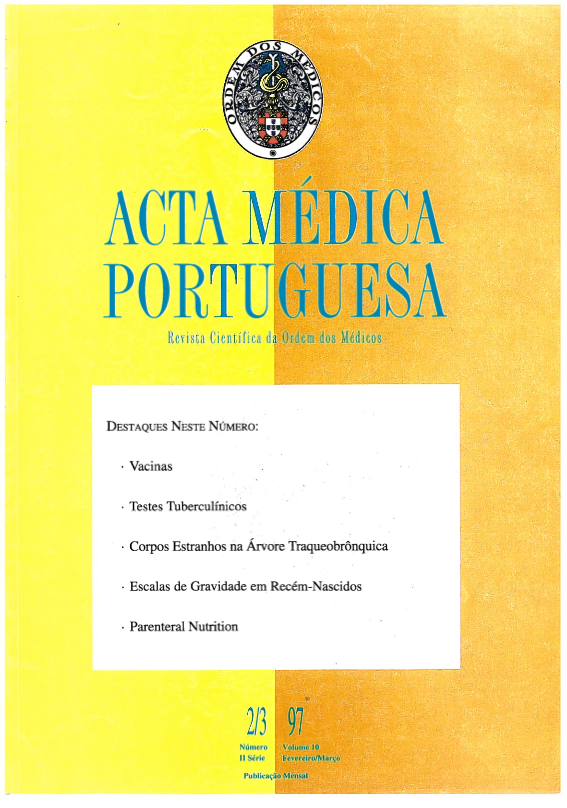Foreign bodies in the tracheobronchial tree. 12 years' experience.
DOI:
https://doi.org/10.20344/amp.2399Abstract
During a period of twelve years--January 1983 to December 1994, 371 children suspected of foreign body inhalation were admitted in Hospital Pediatric of Coimbra. The diagnosis was confirmed in 200 of them (54%), and this group was analysed. The incidence has increased until 1989 and stabilized in the last 5 years with a median of 18 cases/year. Two third of the children were boys and 84% were under three years old. A history of choking was obtained in 87% of the patients but only 39% of the cases had an early diagnosis (within 24 hours). The most frequent clinical findings were abnormal auscultation, sternal retraction, cough, wheezing and fever. Sixty percent of them were asymptomatic. The chest radiology findings were air trapping in 45%, consolidation in 21% and in 17% there were no abnormalities. Radiopaque foreign bodies were found in 9%. Organic bodies were the most frequent (74%) and among these, peanuts, lupines and beans. Food aspiration in one case took to cardiorespiratory arrest and in another with a late diagnosis bronchial stenosis needed a surgical treatment. Complications of foreign bodies extraction had no consequences.Downloads
Downloads
How to Cite
Issue
Section
License
All the articles published in the AMP are open access and comply with the requirements of funding agencies or academic institutions. The AMP is governed by the terms of the Creative Commons ‘Attribution – Non-Commercial Use - (CC-BY-NC)’ license, regarding the use by third parties.
It is the author’s responsibility to obtain approval for the reproduction of figures, tables, etc. from other publications.
Upon acceptance of an article for publication, the authors will be asked to complete the ICMJE “Copyright Liability and Copyright Sharing Statement “(http://www.actamedicaportuguesa.com/info/AMP-NormasPublicacao.pdf) and the “Declaration of Potential Conflicts of Interest” (http:// www.icmje.org/conflicts-of-interest). An e-mail will be sent to the corresponding author to acknowledge receipt of the manuscript.
After publication, the authors are authorised to make their articles available in repositories of their institutions of origin, as long as they always mention where they were published and according to the Creative Commons license.









